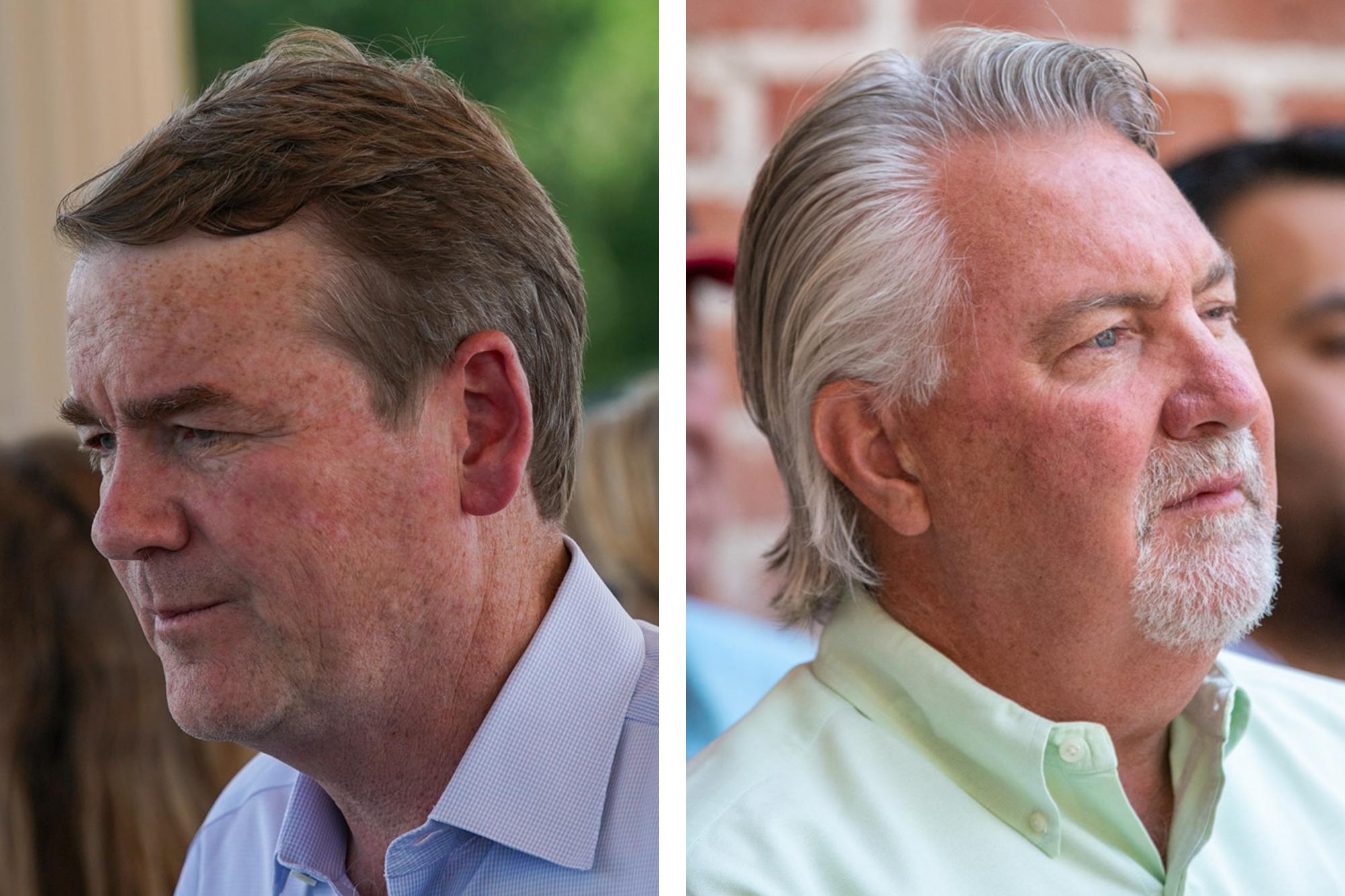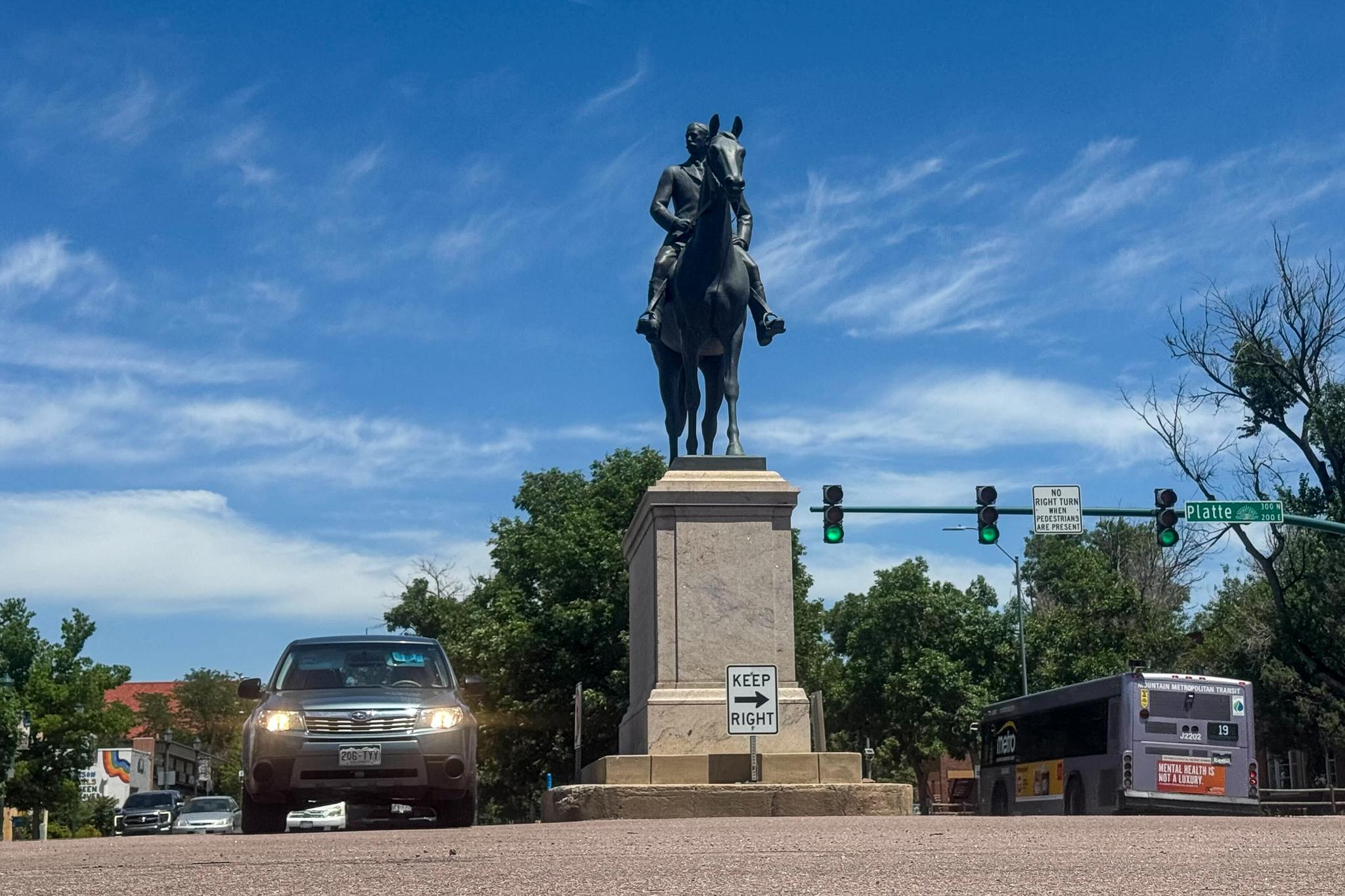
Updated Oct. 19, 2022 at 8:24 a.m.
It’s a truth universally acknowledged (in political circles), that a race that attracts a lot of money is generally considered competitive.
Despite national headlines and fundraising emails, if you view Colorado’s 2022 U.S. Senate race just through the lens of money, it isn’t looking all that interesting.
So far this cycle, Democratic incumbent Michael Bennet has raised a total of $19.9 million, while Republican challenger Joe O’Dea has raised just shy of $6.5 million, $2 million of which came from O’Dea himself.
While money isn’t the deciding factor, looking at the Bennet-O’Dea race in comparison to past competitive Colorado Senate races does show some pricey differences.
Candidate Fundraising
In 2020, when Republican incumbent Cory Gardner was considered one of the most endangered senators and control of the chamber was on the line, he had raised $21.6 million by this point in the cycle. That is in line with what incumbent Bennet has pulled in.
His challenger, John Hickenlooper, however, raised $22.5 million by this time in 2020, far more than O’Dea has. Now Hickenlooper was a former governor, mayor and even short-lived presidential candidate, so he had a wide network to tap into. Businessman O’Dea is a first time candidate, although he did get some fundraising help in Texas this week, with former President George W. Bush and Sen. John Coryn.
Still, looking at other first time candidates in highly competitive races this year shows how disproportionate O’Dea’s seven-figure haul is. Georgia’s Herschel Walker has raised over $31 million, Ohio’s JD Vance has raised $10.5 million, putting $1.4 million of his own money into the race, while Arizona’s Blake Masters has raised $9.7 million, loaning his campaign just over $1 million.
When it comes to Bennet’s last competitive race, in 2010, he raised $13.2 million. His GOP opponent at the time, Ken Buck, brought in just shy of $5 million. The narrow outcome of that race — Bennet won by less than two points — might give the GOP camp some hope, until you look at how much other groups invested in that race, compared to this year.
The real difference between a competitive and non-competitive race is outside spending.
Seth Masket, professor of political science and director of the Center on American Politics at the University of Denver, said money “does tell you how the parties are prioritizing the race and how worried they are.”
When parties see a race as potentially flippable or contested, they can and do devote a lot of resources — especially when control of the chamber is at stake.
The parties and the super PACS aligned with party leadership, aren’t investing much into the Colorado senate race as compared to other races.
Currently, the race has attracted about $18 million in independent expenditures. The Senate Leadership Fund (SLF), a super PAC aligned with Republican Mitch McConnell, has donated $1.25 million to a Colorado Super PAC backing O’Dea. While a Colorado super PAC backing Bennet only has one donor; Majority Forward is a dark money group aligned with Democratic Majority Leader Chuck Schumer and has invested almost $3 million.
In competitive races around the country, several dozen PACs are spending money. But here, in total, just over a dozen PACs are currently active this cycle.
In Pennsylvania, independent expenditures topped $100 million, with the GOP aligned SLF investing more than $32 million and the Democratic aligned Senate Majority PAC (SMP) investing close to $22 million.
In Georgia, independent expenditures top $81 million, and in Arizona, the figure is north of $57 million.
Nevada, a pick-up opportunity for Republicans, the SLF has spent more than $14 million, while the SMP has spent close to $19 million to defend the seat.
Again, 2020’s race — which flipped Colorado’s senate seat from red to blue — saw more than $40 million in outside spending with dozens of PACs investing in the race. In Bennet’s competitive 2010 race, outside spending topped $35 million, according to Open Secrets.
Still, with a few weeks left before votes are counted, outside groups have bought TV air time. Analysis by NBC News found a more than 220% increase in TV advertising for the race. And, without much spending to begin with, $2.5 million for Bennet and the $1 million for O’Dea is a big increase.
Where you see a lot of investment from leadership aligned super PACs and outside groups, is the toss-up race to represent the 8th congressional district. It already has a total of $17 million invested in advertising, according to AdImpact, which looks at political advertising.
When it comes to the Senate race, Masket said a number of polls show this is likely to stay in Democratic hands, despite some media coverage predicting an upset. That could be why the national groups have put some money into the race, but not to the levels of this year’s truly competitive races.
Meanwhile, the Democratic Party spent millions during the Republican primaries to prop up the more conservative candidates, including Republican gubernatorial nominee Ron Hanks.
Masket isn't surprised to see Democrats spending money to help Bennet since they had a stronger fundraising year, in general.
“If they want to protect their Senate majority or make gains in it, they have to make sure their incumbents don’t go down.”
He said though Democrats are confident, they are not taking this race for granted or closing their war chest. And, it appears, the Republican Party isn’t doing that either.
Editor's note: The independent expenditures figure has been updated to reflect an additional $1.5 million ad buy made Tuesday.








